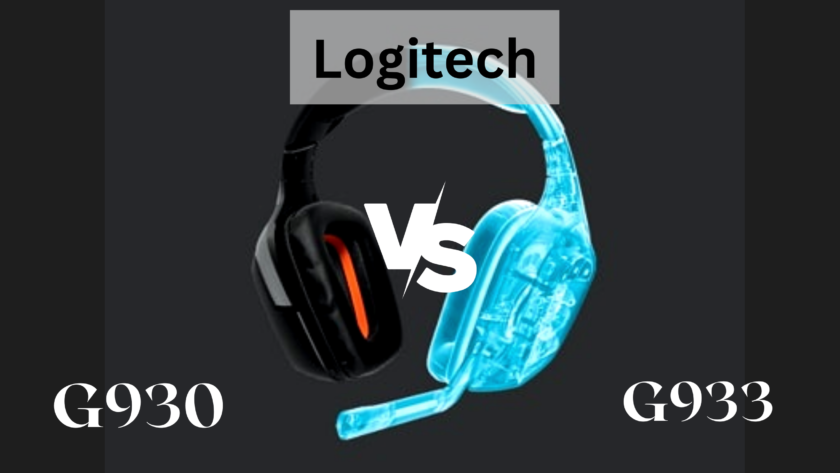DESIGN
Logitech G930
The Logitech G930 headset appears to be standard gaming headphones. They have big and slightly square-ish ear cups, a wide headband, and a semi-glossy surface, similar to the Logitech G430 and Logitech G533 Wireless. These headphones aren’t as appealing as the Logitech G433, but they’re also not intended for usage outside. They’re large and include a non-removable boom mic, making them unsuitable for casual use. They are, however, good-looking gaming headphones, and the red accents in their color scheme add a little flair while remaining discreet and professional.
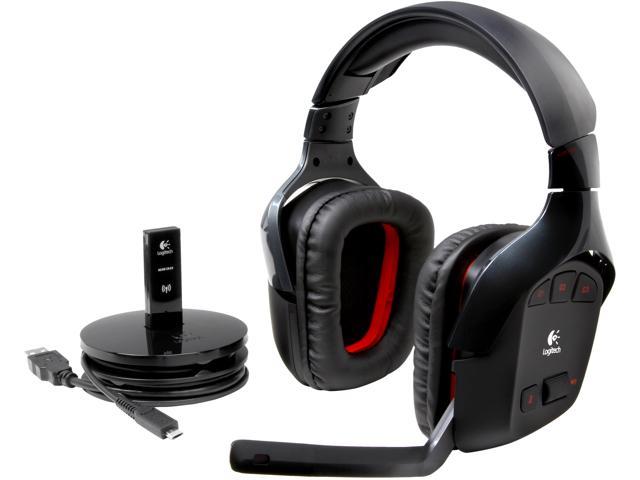
The Logitech G930 is more solidly constructed than Logitech G533 Wireless and the Logitech G433. They have a flexible headband reinforced with a metal frame, and the ear cups seem solid and durable enough to withstand a few drops. Unfortunately, their design is primarily made of plastic and appears cheap for the price. The hinges that support the ear cups are likewise hollow and squeak under light strain. The non-retractable microphone and this are the most vulnerable aspects of the G930’s design.
Logitech G933
The Logitech G933 Artemis appears to be a hybrid of the Logitech G930 Wireless and the Logitech G533 Wireless. They’re a touch big, like the rest of the Logitech portfolio and most gaming headphones, with huge and slightly square-ish ear cups, a wide headband, and a beautiful two-tone color scheme that looks amazing. They are not, however, the most outdoor-friendly headphones because, like other gaming headsets, they have a hefty design and a retractable mic rather than a detachable one. While they are one of the most attractive gaming headsets we’ve tested, they aren’t suitable for usage outside, even though they come with a standard audio wire that will work with your phone.
Build Quality
The Logitech G933 has a higher quality feel than the Logitech G930 Wireless. They have the similar mostly-plastic build quality, but the G933’s slight design adjustments result in a better-built and more premium-looking headset overall. They have a somewhat flexible headband strengthened by a metal frame.
The ear cups are dense and exceptionally durable, with removable back plates that effectively conceal the USB dongle and battery in each.The mic is made of a short plastic hinge and a retractable and flexible boom mike. It’s solid and attractive, but it won’t last as long as the mic designs of other gaming headphones we’ve examined. On the plus side, the ear cup pads, wires, and battery are all changeable, making them slightly more robust than most headsets in the long term.
COMFORT
Logitech G930
The Logitech G930 headphones are reasonably pleasant, with big and spacious ear cups and a relatively loose fit that does not squeeze your skull. They’re lightweight for their size and comfortable enough to wear for lengthy periods of time. The padding on the ear cups, on the other hand, is a little rigid. It’s not a big deal, but it unevenly distributes the pressure around your ears, which can be exhausting during lengthy gaming sessions.

The Logitech G930, like most over-ear headphones, lacks breathability. They form an excellent seal around your ears, obstructing quite a bit of airflow. These also have somewhat less absorbent pads than Logitech G430, which means that they will make your ears slightly warmer during long gaming sessions than the lower-price model. They are not intended to be used in hot and humid settings, nor are they intended to be used while conducting the strenuous activity or moving about a lot, but they should be adequate for gaming and casual/critical listening.
Logitech G933
These headphones, such as the Logitech G930 Wireless, Logitech G533 Wireless, and HyperX Cloud Flight, are reasonably comfortable, featuring detachable and breathable cushions. They offer big and spacious ear cups, as well as a somewhat flexible fit that does not press your head as tightly as some of the other gaming headphones we’ve tested. They’re comfy enough to wear for extended periods of gaming. The cushioning on the ear cups, on the other hand, is a little stiff and doesn’t feel as good on the skin as the microfiber or leather coating on some of the other gaming over-ears.

These headphones offer a standard over-ear design with breathable ear cup padding. They form a reasonably good seal around your ears, obstructing a significant amount of airflow. However, the slightly permeable pads keep them more relaxed than ordinary over-ear headsets. They won’t be the finest headphones to wear in hot and humid situations, and they’ll get your ears warm after a few hours of listening, but they’ll be fine for gaming and about average for other applications.
CONTROL
Logitech G930
The Logitech G930 has an excellent yet somewhat perplexing control system. With its button arrangement, they give you a lot of game play alternatives. You can mute the microphone, adjust the volume with a simple dial, and switch between multiple EQ presets on the ear cup. On the side of left ear cup, there’s even a Dolby surround sound switch. Unfortunately, because they are not designed to be compatible with mobile devices, they lack a call/music feature, which would have improved their control method.
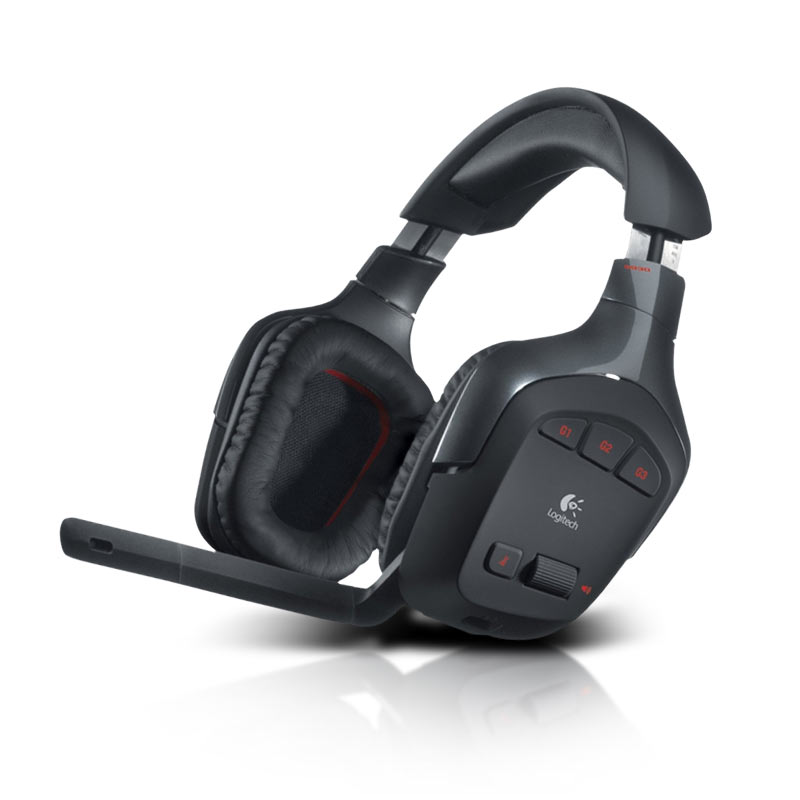
Logitech G933
The Logitech G933 has excellent but somewhat perplexing controls. They include two control schemes: one for wireless use with the default button arrangement on the right ear cup and another for wired use with the 1/8″ TRRS audio cable, which includes an in-line remote. The in-line remote consists of a standard button arrangement, including a play or pause or call management button, a small volume dial, and also a microphone mute switch. The wireless layout, on the other hand, gives you a bit more control over the headphones’ features.

A volume dial with improved feedback, a mute mic button, and the power switch are all located here. You also get three programmable buttons, which you can assign to various settings and functions using the Logitech gaming software. The default configuration will cycle through different EQ modes, enable surround sound, and alternate between multiple LED light patterns. All the buttons are well-made and provide a terrific feeling reminiscent of console controller d-pads. Unfortunately, having so many options on one ear cup can be perplexing at first, especially during a heated multiplayer game. You gradually get used to it because of the slightly higher notches on the buttons, but it takes some time.
SOUND
Logitech G930
The frequency response consistency of the Logitech G930 is subpar. We measured maximum of 15dB of variance at 20Hz across our five human subjects in the bass range. We detected more than 6dB of conflict at 100Hz, which is relatively noteworthy. Also, as is familiar with most closed-back headphones, wearing glasses may cause the seal to fail, resulting in a considerable loss in the bass. Their treble delivery, on the other hand, is far more constant and within reasonable bounds. The Logitech G930 has an excellent bass range.
The low-bass extension is outstanding, reaching 14Hz. The remainder of the range is nearly flat and only 1dB above our aim. As a result, the bass on these headsets is well-balanced, deep, and powerful. The bass you experience from these headphones may differ from what is mentioned here due to their uneven bass output among numerous users.
Also, the Mid-range is excellent. The response is mainly flat and even across the spectrum, but the mid has more than 3dB of overemphasis, pushing vocals/leads to the front of the mix. This gives the G930 a slightly boxy sound. The dip at 250Hz also thins out the voices and lead instruments slightly.
Treble Range
The treble range performance of the Logitech G930 is average. Throughout the range, the response is variable and on the warm side. Furthermore, the dip around 4KHz will have a minor but discernible negative influence on the presence and quality of vocals/leads. Isolation performance is poor. Because these over-ear headphones lack active noise cancellation (ANC), they do not isolate in the bass region. As a result, they let in all of the low-frequency rumbles, such as the sound of airplanes and bus engines. They provide roughly 8dB of isolation in the mid-range, which helps block out speech. They accomplish 26dB of isolation in the treble range, which is inhabited by sharp sounds like S and Ts, which is above average.

The leakage performance of the G930 is below average. Most of the leakage from these headphones is located in the mid-range between 400Hz and 2KHz, which is not particularly broad, but they also leak in the treble range. The overall volume of their leaks is also not extremely loud. With the music at 100dB SPL, leakage averages 44dB SPL and peaks at 57dB SPL, which is substantially more audible than a typical office noise floor.
Logitech G933
The Logitech G933’s frequency response consistency is poor. These headphones provide inconsistently among many subjects, particularly in the lower frequencies. They indicate more than 6dB of variance below 100Hz across our five human participants in the bass range, particularly those wearing spectacles. They perform better in the treble range since the discrepancies occur in narrower regions. The bass is excellent. The LFE (low-frequency extension) frequency is 10Hz, which is great. Furthermore, low bass is more than 3dB above our aim. This suggests a deep and extended bass with a thump and rumble that some users may prefer.
Mid-bass is overemphasized by more than 3dB, which is responsible for the body of bass guitars and the punch of kick drums. High bass, responsible for warmth, is more balanced, and is boosted by around 1dB.
If you like bass-heavy music and video game sound effects, you should check out the Razer Nari Ultimate with its bass-haptic feedback system. Furthermore, their bass delivery varies greatly amongst users and is sensitive to the fit, seal, and if you wear glasses.

The response below indicates the average bass response; your results may vary. Mid-range on the Logitech G933 headset is excellent. The answer is flat and level, ideal for delivering precise and well-balanced vocals and instruments. It is, however, regularly recessed by around 2.5dB, which pushes voices to the back of the mix by emphasizing lower frequencies. Isolation performance is poor. They accomplish no isolation in the bass range, occupied by the grumble of airplane and bus engines.
Sound Isolation
Also they achieve roughly 7dB of isolation in the mid-range, which helps block out speech. They isolate by 20dB in the treble register, where sharp sounds like S and Ts reside. The leaking performance of the Logitech G933 is subpar. The majority of their leakage occurs between 300Hz and 4KHz, which is a wide frequency range. The total degree of leaking is also quite loud. When the music is turned up to 100dB SPL, the leakage at one-foot distant averages 46dB and peaks at roughly 58dB. This is slightly over the noise level in most offices.
MICROPHONE
Logitech G930
The microphone on the Logitech G930 is above average. Speech recorded or transmitted with this mic in quiet circumstances will sound somewhat thin, with a slight loss of air and sparkle. It will, however, be transparent, thorough, and intelligible. In most cases, it can fully differentiate speech from background noise in noisy environments. The microphone on the G930 is of good quality.

LFE (low-frequency extension) of 380Hz indicates a relatively thin recorded/transmitted voice. HFE (high-frequency extension) of 7.2KHz suggests that speech will be detailed and precise but lack airiness and sparkle. The response is relatively uniform and balanced between the LFE and HFE points. The G930’s boom microphone is effective at noise reduction.
Logitech G933
The Logitech G933 features an excellent microphone. Also, the LFE (low-frequency extension) of 281Hz suggests a thin recorded/transmitted voice. HFE (high-frequency extension) is set to 6.3kHz, which produces clear and detailed speech but may lack airiness. Reply between the LFE and HFE points is relatively flat, which results in actual voice capture. The Logitech G933’s boom microphone is exceptional at noise reduction. In our SpNR test, it achieved a speech-to-noise ratio of 25dB. This shows they can effectively differentiate speech from ambient noise in most conditions.

ACTIVE FEATURES
Logitech G930
The Logitech G930 headphones feature an excellent battery life, with up to 10 hours of continuous game play. They take a long time to charge when compared to more contemporary Bluetooth headphones, but they work well when compared to other gaming headsets. Also, they turn off automatically if no music is playing to save battery and can be used while charging, which is perfect for gaming marathons if you’re near a power source.
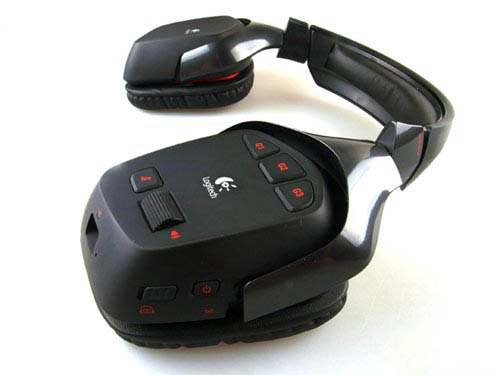
When used in conjunction with the Logitech G930 headset, the Logitech Gaming Software is highly customizable. You get the superb equalizer and surround sound effects that you can customize microphone and volume levels that you can control directly from the software and swappable profiles with saved personal preferences. Furthermore, the headset contains three additional buttons that may be assigned to specific commands, which is unusual for gaming headphones.
Logitech G933
The Logitech G933 headphones feature an excellent battery life, with up to 12 hours of continuous gameplay. When compared to more modern Bluetooth headphones, they take a long time to charge, but when compared to few gaming headsets, they are about average at 3.8 hours. They also switch off automatically after 5 minutes if there is no music playing, which saves a lot of electricity.
They may also be used while charging, which is perfect for gaming marathons if you’re near a power source, such as when gaming on a PC. When connected with the G933 headset, the Logitech G HUB is highly customizable. You get a superb equalizer with customizable surround sound effects, microphone and volume levels, changeable profiles with saved personal settings, and an adjustable audio off-timer that you can set right in the app. To help make a more immersive gaming experience, you can also use Dolby 7.1 Surround and DTS virtual soundstage technologies.
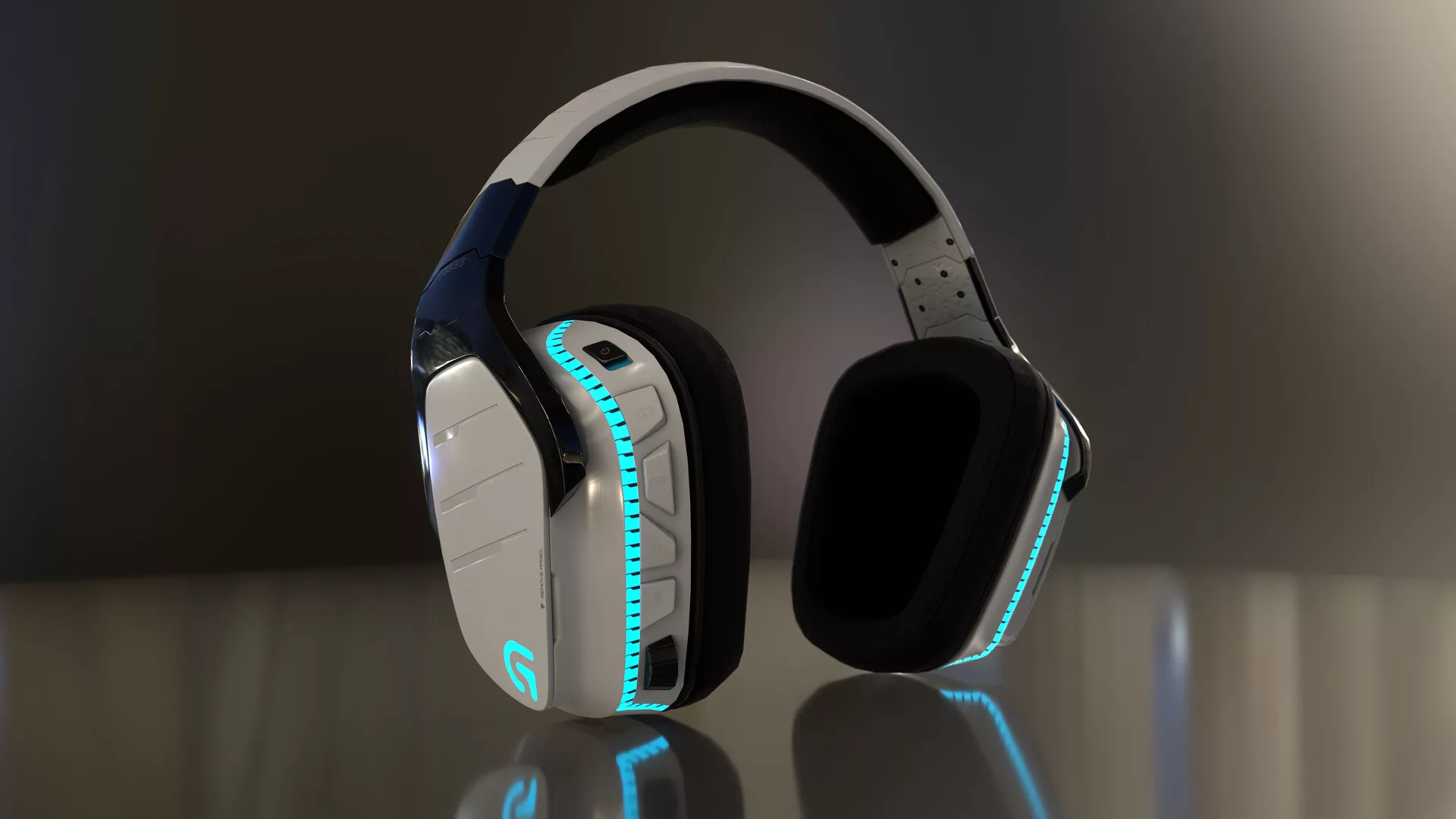
These headphones, like the Logitech G930 Wireless, include 3 programmable buttons that you can map to trigger particular instructions, which is impressive and sets them apart from typical gaming headsets. Unfortunately, there have been numerous customer comments about the software’s stability, including startup issues, freezing, and connection issues with specific devices. Although we did not experience these issues with these headphones, please let us know in the comments if you have any.
CONNECTIVITY
Logitech G930
Bluetooth connectivity is not available with these headphones. The G930 has a latency of 21ms, which is ideal for gaming and streaming video content. They outperform sure home theater headphones, making them an excellent choice for watching movies as well. These do not include an audio wire. The base/dock is a compact USB dongle transmitter that supports audio and microphone on PS4 and PC but not Xbox One. However, unlike the Logitech G933 Wireless, it lacks an AUX input.
Logitech G933
Bluetooth connectivity is not available with these headphones. They have a low latency of roughly 22ms, which is ideal for gaming and streaming movies. Logitech G933 has a 1/8″ “TRRS audio cable with an in-line remote and microphone that works with your phone, consoles, and PC, though you’ll probably use the USB cord on your PC to use their app. The 1/8, on the other hand, “The TTRS cable is best suited for iOS devices and has only limited support for older Android smartphones.
The base/dock consists of a compact USB dongle transmitter with a line-in jack. It also functions as an audio mixer with a line input, mixing in-game audio with an auxiliary source such as your phone, console, or TV. It is PS4 and PC compatible but only delivers audio for the Xbox One. However, because it is only a USB stick, it does not support dock charging, which makes it less convenient than some of the other wireless headsets we’ve tested.
CONCLUSION
The Logitech G933 Wireless gaming headset outperforms the Logitech G930 Wireless. G933 has additional customization choices, a better-balanced default sound, and a longer battery life than the G930. The G933 also has a better, more attractive build quality, as well as more responsive controls. The G933 also has extra connection possibilities, making it more adaptable for streaming movies or outdoor use. The G930, on the other hand, has a slightly more subtle look that some may prefer over the G933. They also include a USB extension chord, which may be more convenient for some PC users.

